I felt fascinated by the history behind the 11 most beautiful castles in Mexico.
This country has more than just Spanish people that have influenced the country’s architecture too.
Contents
- 11 Most Beautiful Castles in Mexico
- Chapultepec Castle
- Palacio de los Estucos (Palace of Stuccos, The Acanceh)
- San Juan de Ulua Fort
- Castillo Douglas (Castillo Ortega)
- Tepoztlán Municipal Seat
- Castillo de Nuevo Apolonia
- Casa Colomos (Bosque Colomos)
- Cabanas Cultural Institute
- Fortaleza de San Carlos
- Poliforum Mier y Pesado
- Castello de Gillow
- Mexico Safety Overview
- Frequently Asked Questions
11 Most Beautiful Castles in Mexico
Chapultepec Castle
The Chapultepec Castle in Mexico City first stood in the 18th Century.
It became the home of President Francisco I. Madero, who served from 1911-1913.
Presidents Venustiano Carranza, Alvaro Obregon, Plutarco Elias Calles, Emilio Ports, and others also lived here in the 1900s.
In 1939, the Castle became the Museum of National History.
The former castle now houses 12 permanent exhibit halls.
Historical themes include the Mexican Conquest of the 1500s and the Mexican Revolution in the 1900s.
Renovations include recreations of Maximiliano, Carlota’s, and President Porfirio Diaz’s rooms.
Another room recounts the story behind the Battle of Chapultepec in 1847, which resulted in an assault on the Castle.
Palacio de los Estucos (Palace of Stuccos, The Acanceh)
The Palacio de Los Estucos is located in Merida, Mexico, and makes up one of five popular Maya history tour stops.
The outer perimeter of the Palace and related structures measures 164 feet wide by 20 feet high.
I’ve never been to Merida, but I learned from someone who has been that the Stuccos Palace is a “very important technology for its time.”
It serves as both a place of natural and historical significance.
If I were to visit the Stuccos, I’d check out both the Pyramid and the Palace.
They’re both main attractions located in the Northern Yucatan Peninsula.
Also known as the area of the Acanceh or “Cry of the Deer,” it first showed up about 700-50 BCE.
This architecture stayed popular up until about 1000 AD, and this former city spanned about 1.2 square miles.
It contained about 300 structures in all.
The Stuccos castle used to have facade masks in it that reached at least seven feet tall, but these artifacts have suffered destruction over the centuries.
Eight main masks, otherwise known as monumental faces, marked the people to whom the buildings or dwellings belonged.
Stucco also represents a type of architecture.
Even as late as 2022, this trim design often shows up on walls and ceilings.
Builders also sometimes use it as an exterior or interior perimeter trim that intersects with rooftops on commercial buildings.
In residential homes, the Stucco design may serve both decorative and waterproofing purposes around windows and around roofs.
San Juan de Ulua Fort
I haven’t had the privilege of seeing San Juan de Ulua located at the Port of Veracruz yet.
I would if I had the opportunity though, after viewing pictures of it.
I think it’s one of the most unique and fascinating castles in Mexico I would ever want to see.
One photo from 2015 reveals a distressed look on the exterior walls.
This former palace includes several fortresses and a prison, and it sits in San Juan on the Gulf of Mexico.
Juan de Grijalva first arrived on the island in 1518.
From 1535-1843, the Ulua Fort came to be, and this included several additions.
It served as a protective military force for almost 350 years, and it belonged to the Spanish Empire. Christian missionaries also found refuge here.
In addition to the towers and dungeons, it also had a palace for the governor.
A cemetery and parade routes for celebratory and memorial purposes also make up parts of the Ulua Fort.
By the way, some of the distress in the coral material used to make this fortress and palace occurred because of settling.
The foundation had weakened both because of war and natural erosion.
Castillo Douglas (Castillo Ortega)
I didn’t know anything about Castillo Douglas (Douglas Castle) until I saw its photo.
It’s what I picture in my head when I think about what a castle looks like though.
It portrays a medieval (Middle Ages) feeling, in my opinion.
Federico Mariscal first designed the Castillo Douglas under the direction of J. Refugio Reyes Rivas.
They intended it for Edmundo Ortego Douglas, thus the name of it.
John Douglas, the grandfather, came to Aguascalientes, Mexico from Scotland.
I did indeed find out that the castle does have a medieval feel.
However, it wasn’t built until during the Modern Era, which ended in the 1960s.
The original construction consisted entirely of stone starting in 1923, according to Alluring World.
Tepoztlán Municipal Seat
The Tepoztlán Municipal Seat located in Morelos, a Mexican state, sits in the valley of the same name.
It’s about an hour’s drive from Mexico City.
Therefore, you could visit this area, which is rich in history and culture, on the same day if you want.
Some ceramic pottery and other artifacts found in this location date back to about 1500 BCE.
Spanish influence continued here throughout the late Middle and early Modern Ages, as late as about 1555-1580.
Of course, Tepoztlan government buildings in this location serve as significant historical structures too.
The trimmings, carvings, and structures represent architectural influences from medieval and modern times.
Castillo de Nuevo Apolonia
The Castilla de Nuevo Apolonia (New Apolonia Castle) sits near what used to operate as the El Naranjo farmhouse.
You’ll find this location near the Santa Clara River, and the castle makes up part of this area.
The El Mante municipality also considered a temporary zone, recounts a legend of President Porfirio Díaz.
Diaz supposedly used to come here often to hunt near the castle.
I find the Nuevo Apolonia rooftop fascinating, personally.
It’s just like the kind you’d find in a knight fairy tale, although I never did read that many fantasy stories as a child.
There’s nothing fake about the construction of the Nuevo Apolonia in my opinion though.
It’s real.
This castle is so old that it’s at least abandoned in part.
It even has some towers, and it represents an “older” style of European architecture, with hints of medievalism.
Casa Colomos (Bosque Colomos)
Casa Colomos is more spread out than some castles.
One part of it I found fascinating is the walkways that extend about halfway as high as some of the trees found onsite.
It features medieval-style bridges that go over narrow waterways.
The Colomos is in Guadalajara, and it used to serve as this Mexican city’s water supply control center.
It also has a garden infused with Japanese influences, which surprised me.
The Spanish apparently weren’t the only people settling in this area, however.
There’s a cultural center nearby that operates in the present day, as late as 2022.
Depending on the hours you arrive at the Colomos, there are classes, movies, and exhibits you can view.
Cabanas Cultural Institute
Since the Cabanas Cultural Institute is on the UNESCO World Heritage Site list, I feel it’s worth mentioning.
The Spanish people built it from 1805-1810.
My first thought before researching about the Cabanas is that it has a “religious feel.”
It reminds me of churches built at least as early as the 19th century.
As it turns out, it did house orphans at one time, but it now houses contemporary works of art.
Jose Clemente Orozco has some of his murals on site here too.
Fortaleza de San Carlos
I remember back in the 1990s when I was in high school.
That was almost a lifetime ago, I know.
Back then, I wanted to create a U-shaped home because our sociology told us to design the perfect house.
I came up with a plan similar to the Fortaleza de San Carlos according to what would make it for other people.
I picked one that has a long hall but without the arched windows that the San Carlos Fort has.
This Perote, Veracruz, Mexico dwelling was made in the 18th Century.
It’s way past the medieval period, but it does have some remnants of that architectural period.
Poliforum Mier y Pesado
I don’t expect you to like all the same Mexican castles I do.
I’m an artistic person, though.
That’s why I find it interesting that the Mier y Pasado site has been designated as one of artistic influence significance as of 2014.
You get a chance to see inside if you want, as it’s home to public museum attractions.
You can appreciate the exterior beauty also.
It has well-manicured gardens and trees.
In addition, it has a pond and several restaurants.
You could sit, relax and enjoy cuisine after a long day of sightseeing.
Castello de Gillow
The Castello de Gillow (a.k.a. Gillow Castle) doesn’t have the same “grand” experience that other former palaces might.
This fort, however, does have what I’d call an exquisite burnt brick color, and the trim around the corners up to the roof cables and towers accentuates it.
I’d probably stay here if I could.
They allow pets, but that’s beside the point.
The Gillow Castles in different places around the world first came to be in the 1700s-1800s.
One Gillow Hotel location is on Medero Street.
It’s a brief walk from the Metropolitan Cathedral of Mexico City.
Mexico Safety Overview
READ THE FULL REPORT: Mexico Safety Review
Safety Index: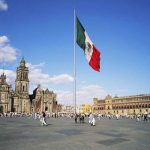
- OVERALL RISK: MEDIUM
- TRANSPORT & TAXIS RISK: LOW
- PICKPOCKETS RISK: HIGH
- NATURAL DISASTERS RISK: LOW
- MUGGING RISK: MEDIUM
- TERRORISM RISK: LOW
- SCAMS RISK: HIGH
- WOMEN TRAVELERS RISK: LOW
Frequently Asked Questions
Is all of Mexico Spanish?
As far as the language, almost all of Mexico speaks a language derived from the Spanish tongue.
Who immigrated to Mexico?
To have a better understanding of architectural history, keep in mind the Spanish aren’t the only ones to have migrated to Mexico.
Chinese and American people have as well, especially from the early 1900s to the present (2022).
To see proof of this, compare and contrast some Asian and Spanish building designs.
Particularly the “pointed” roof trims, which showed up quite a bit in both regions.
Who influenced Mexican castles?
Spanish culture seems to have dominated the building of Mexican castles.
However, some of the architecture originates from Scotland, England, and other places where royal buildings stand.
Who were the first people in Mexico?
The Olmec people first showed up in present-day Veracruz and Tabasco states.
They descended from Aztec people, and “Olmec” means “the rubber people.”
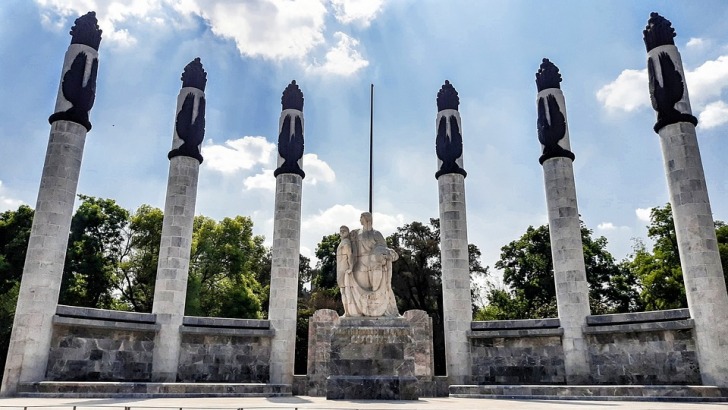
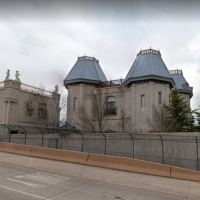
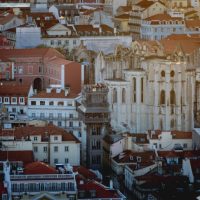
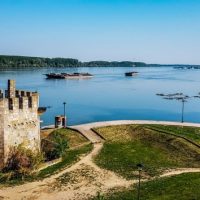
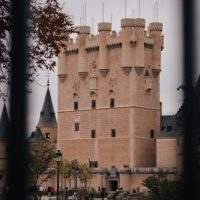
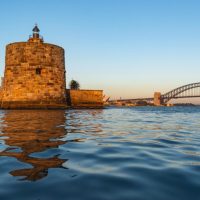
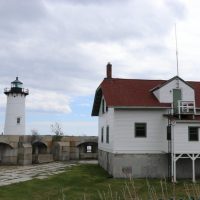





The history and architecture of Mexico’s castles are truly fascinating to me.